UWP or Universal Windows Platform apps can be found in the Microsoft Store, and in many ways, they operate differently from the traditional Win32 apps, but by nature, they are the same. Like the regular Win32 apps, these apps can drain your battery if left to run in the background. The thing is, many of these apps need to run in the background in order for the user to take advantage of the full feature set. You see, for such things as live tiles and notifications to work, UWP apps must run in the background at all times.
Turn off or Disable Background Apps in Windows 11/10
Seeing as the information for live tiles and notifications are usually delivered from the cloud, UWP apps should drain less power from your battery when compared to Win32 apps, but this has yet to be tested by us, so it is still up in the air.
Stop Windows apps from running in the background
There are four ways to do this, but first, we are going to look at how to stop specific apps from running – you know, the ones that are not overly important.
1] Via Windows Settings Background Apps Permissions
Windows 10
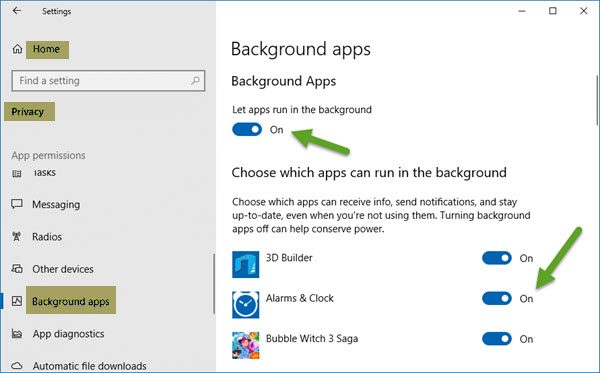
To accomplish this, click on the Start Menu then open the Settings apps. Click on Privacy, then scroll down to the option that says, Background Apps.
From here, you should see a list of apps that have permission to run in the background. Under Let apps run in the background section, simply use the toggle off/on switches to perform the relevant task.
Windows 11
In Windows 11, there is no global setting that allows you to turn off all background apps. You have to do it for every app individually.
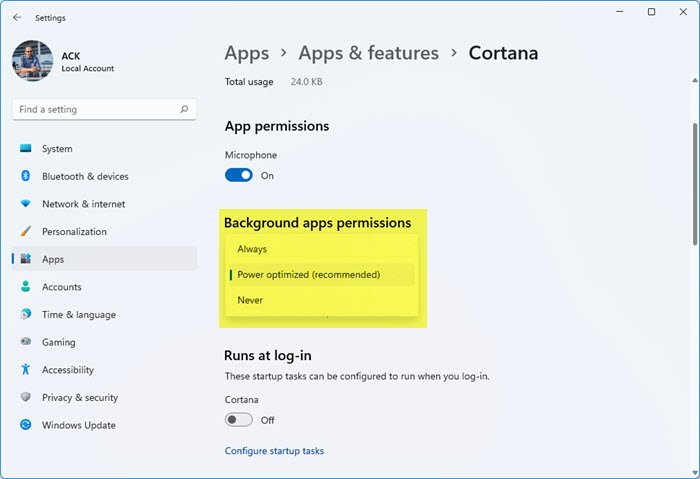
To prevent or Windows 11 apps from running in the background:
- Open Windows 11 Settings
- Go to Apps > Apps & features
- Locate the app you want to prevent from running in the background
- Click on Advanced options
- Open the Background apps permission drop-down menu
- Here you can select Always, Recommended, or Never.
Keep in mind that apps such as the Alarm and Mail apps should always run in the background if they are used on a regular basis. Turning them off means you won’t get awakened by the Alarm bell, and you won’t get notifications or live tile updates when a new email has arrived.
When you reduce the apps that can run in the background, you will definitely conserve power as well as make your PC run better.
2] Via Battery Saver mode
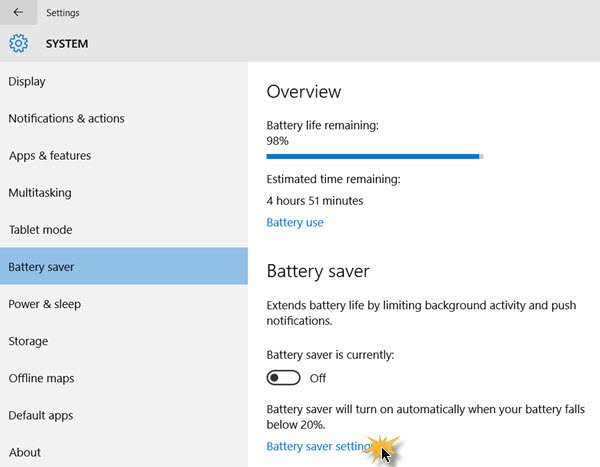
Another way of stopping UWP apps from running in the background, is simply, turning On the Battery Saver mode. Do this, and all apps will cease from running in the background right away. This is great for when you’re away from a power supply and want to get the most out of your battery’s energy.
To do this, click on the battery icon situated in the notification area, then click on the Battery Saver option to complete the task. See that? The whole process is as easy as saying your ABCs, so there should be no more complaints about battery problems in the future.
In Windows 11 similarly, you have to configure the Battery saver settings.
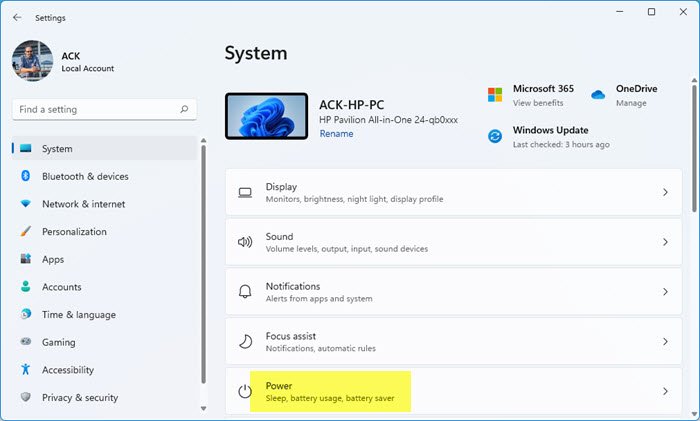
You will get them under Settings > System > Power.
3] Using Registry Editor
Open Registry Editor and navigate to the following key;
HKEY_CURRENT_USER\Software\Microsoft\Windows\CurrentVersion\BackgroundAccessApplication
Here:
- Create a new DWORD (32-bit) value with the name Default and set its value to 1
- Also, create another DWORD (32-bit) value with the name Migrated and set its value to 4
Restart your computer.
This will prevent all your Windows apps from running in the background.
4] Using Group Policy Editor
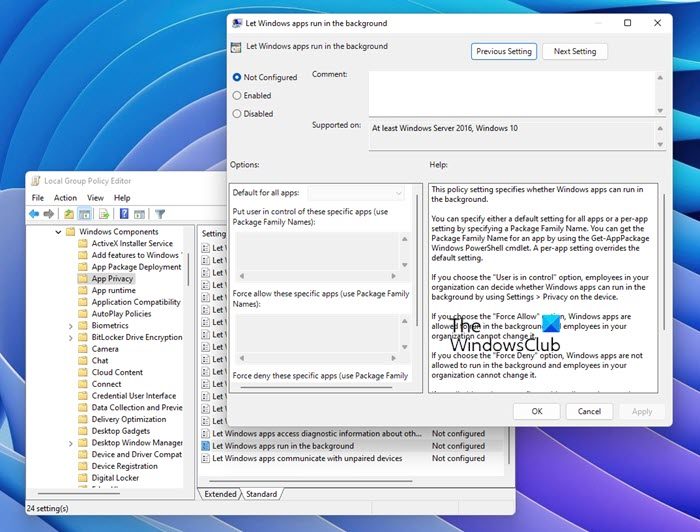
Open Group Policy Editor and navigate to the following setting:
Computer Configuration > Administrative Templates > Windows Components > App Privacy.
Locate the Let Windows apps run in the background setting and set it to Enabled.
From the drop-down menu for Default for all apps, select Force Deny.
Click Apply and exit.
This will prevent all your Windows apps from running in the background. In this way, you can also restore a Missing Background Apps Permission Option in Windows 11/10.
How do I reduce background processes in Windows 11?
There are many ways to manage or reduce background processes in Windows 11. You can use the Task Manager to kill unnecessary background processes. Be careful while terminating the processes via the Task Manager. Terminating useful Windows processes can make your system unstable. You can also use the MSConfig app to prevent third-party services from running automatically on system startup. Again, be careful while using the MSConfig app for disabling startup services. If you disable all the services, you will not be able to use your system.
How can I make Windows 11 faster?
You can enhance the performance of Windows 11 on your system by tweaking some settings. Background apps continuously use system memory. This will impact your system’s performance if it has less RAM. Hence, disable these startup apps. Turning on Fast Startup will make Windows 11 boot quickly.
Hope this helps!